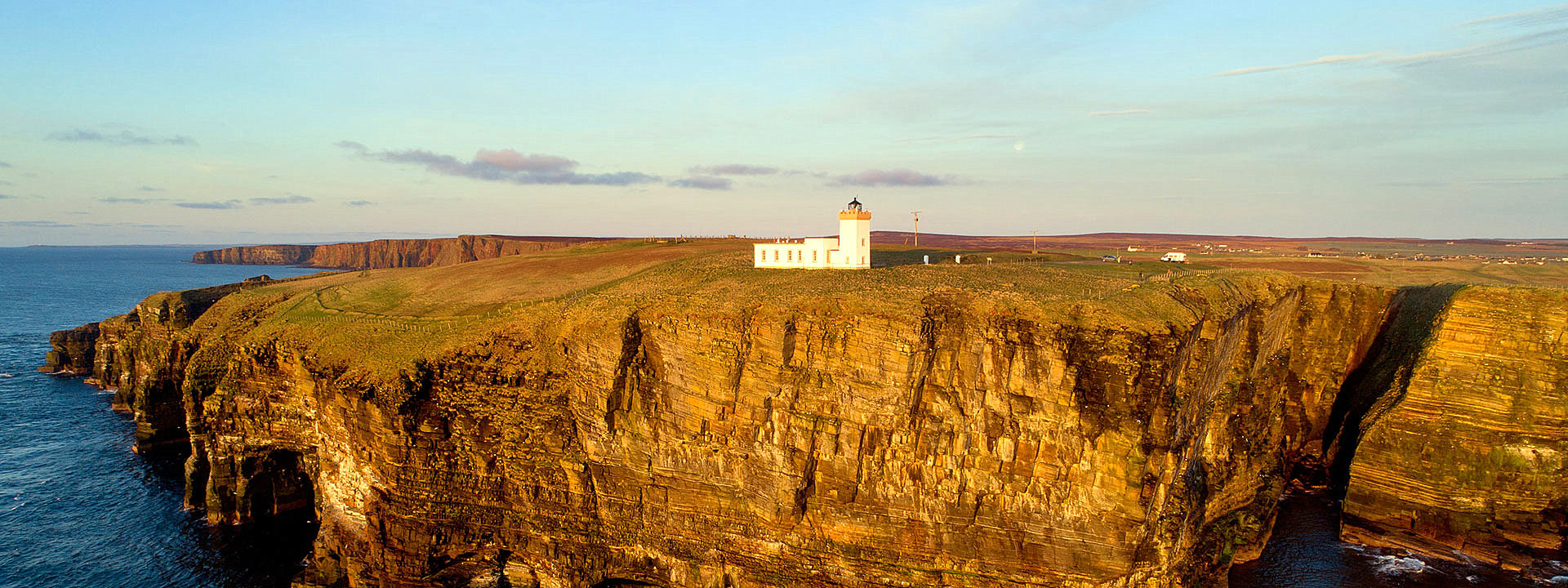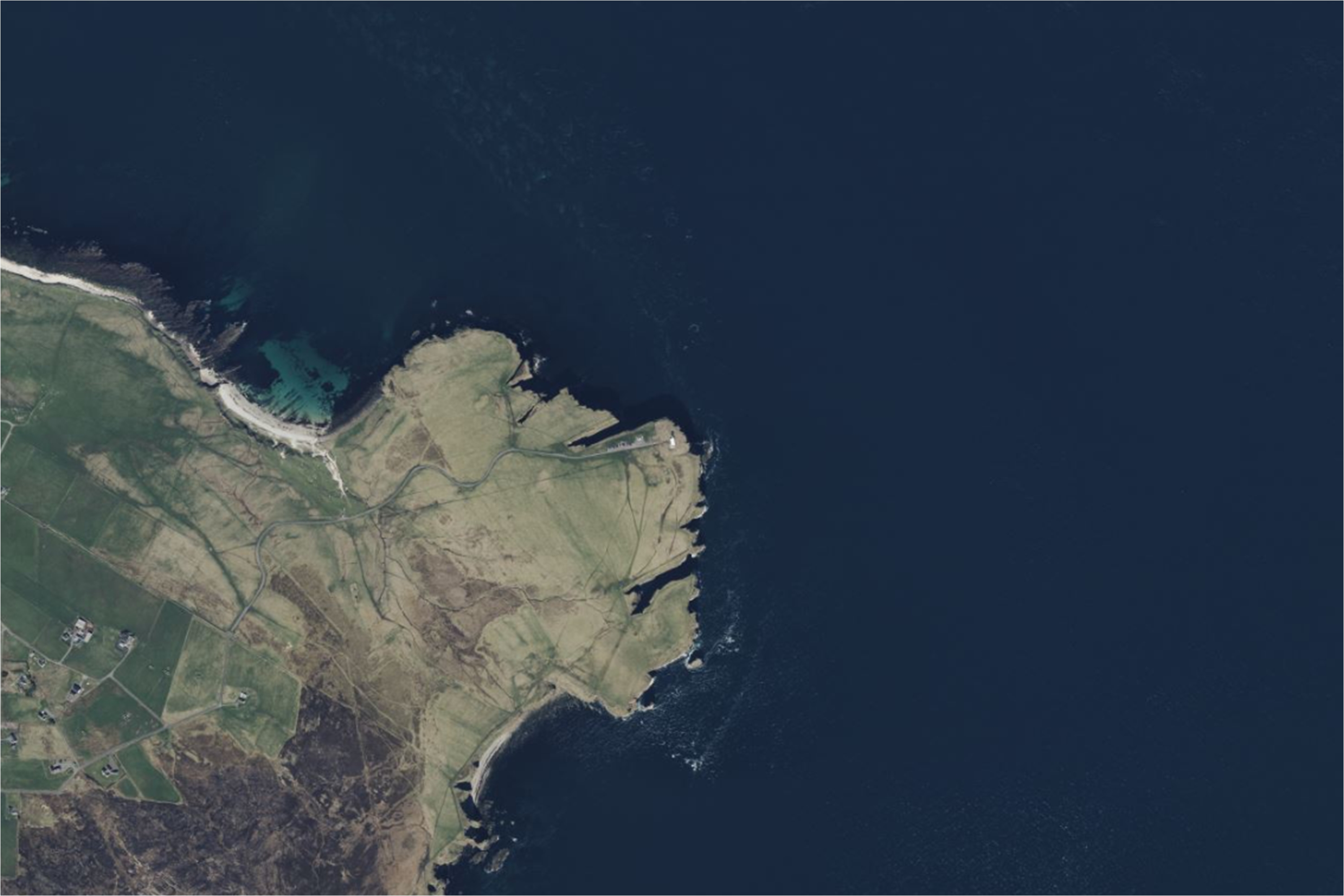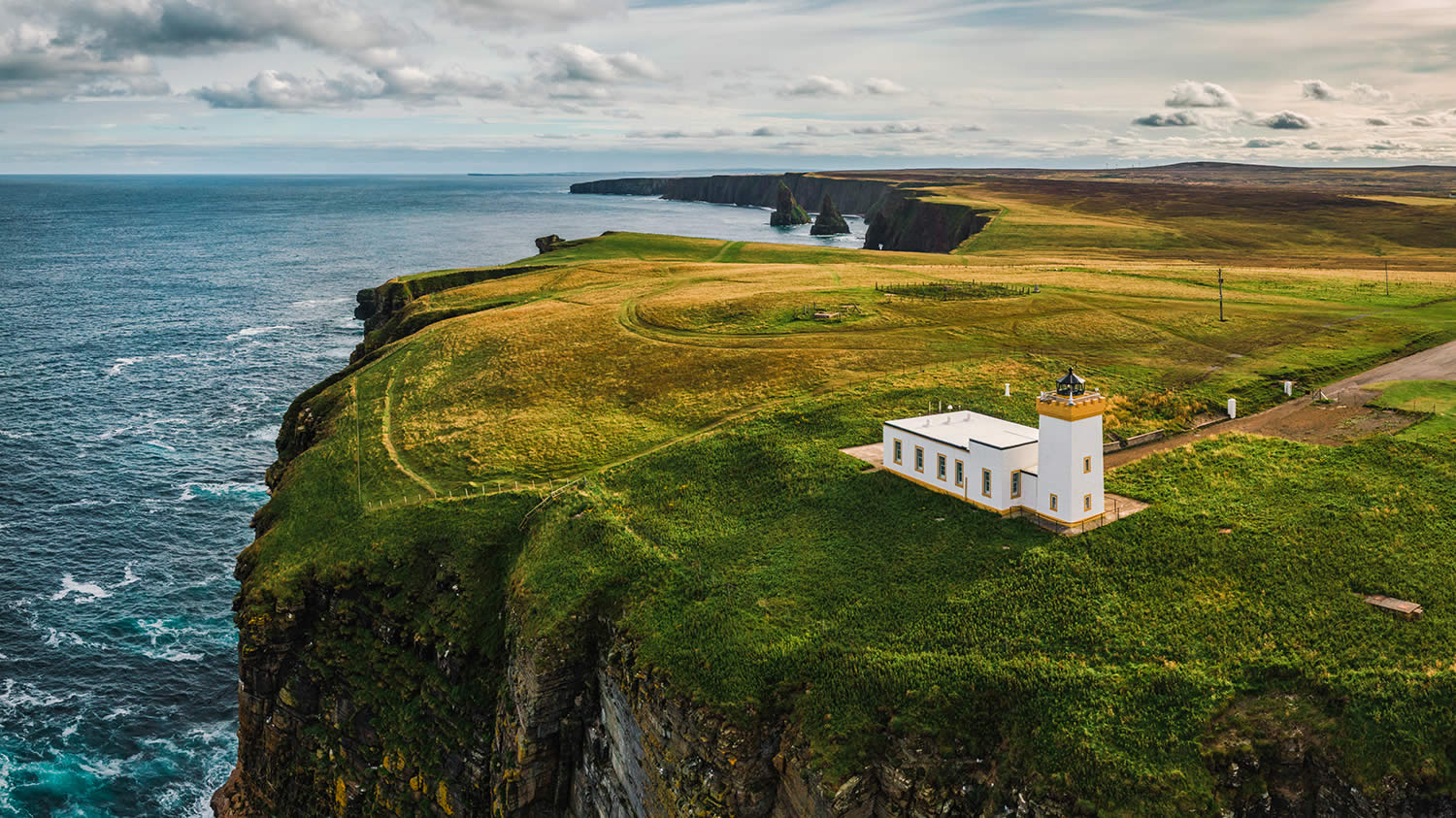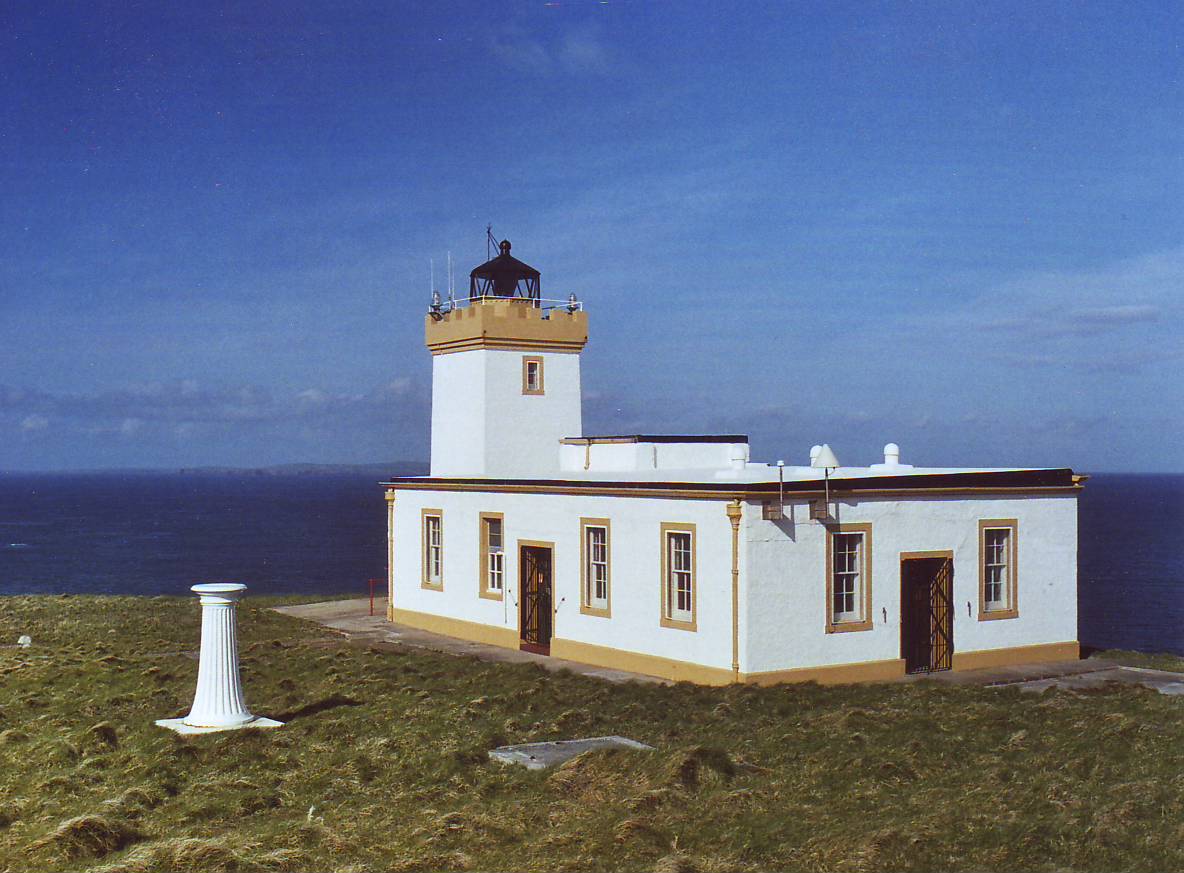
Duncansby Head (Scottish Gaelic: Ceann Dhunngain or Dùn Gasbaith) is the most north-easterly part of the Scottish mainland and overlooks the Pentland Skerries. This point is just a little further on raod from Land's End (Cornwall) than the usually named John o 'Groats, Caithness, Highland (about 3 km). The headland juts into the North Sea, with the Pentland Firth to its north and west and the Moray Firth to its south.
The tidal currents that flow through the Pentland Firth earned the title of Hell's Mouth in the days of sailing. It is still a place where ships can still become the playthings of the sea.
As the waters of the wide Atlantic flow into the North Sea and in the opposite direction from the North Sea, a maze of whirlpools and treacherous currents are created near the Pentland Skerries. These can reach speeds of up to ten knots.
The effects are so dramatic that each of these tidal races has been given a name - the Swilkie, the Bore of Huna, the Wells of Tuftalie, the Duncansby Bore and the Merry Men of May. Because of the danger to ships in this area, six working lighthouses can be seen at Duncansby Head (car park) to aid shipping.Duncansby Head Lighthouse was built in 1924 by David Alan Stevenson. The traditional round tower has been abandoned and (curved walls require interior fittings made to match) even the concrete lantern tower is square.
The light was a 4th order Fresnel lens with stepper motor and a 250W Metil Halide lamp. In 1968 a high-power Radar Beacon (RACON) was installed. It has now been replaced by a low-power self-operating DGPS system, which can be particularly useful as a warning where the coastline is not conspicuous on a radar display.
The lighthouse was automated in 1997. Soon after, an inspection of the keeper's houses showed water damage and asbestos on the premises so the houses were demolished but the tower remained and the light stayed in use. Older photos of the lighthouse show the buildings that were demolished (the last photo in the right coloum). The Light is now remotely monitored from the Northern Lighthouse Board’s headquarters in Edinburgh.

From the lighthouse is a footpath of about 6.5 kilometres to the Hill of Crogodale. This footpath runs directly along the coast to the south past the Stacks of Duncansby, prominent sea stacks just off the coast.
The town of Wick is located in the south of Duncansby Head. In Wick there is a distillery called Old Pulteney. In recent years they have released a number of whisky's with a reference to the various lighthouses in the area. Besides a whisky that refer to Dancansby Head, there are also whisky's that refer to the lighthouses Noss Head, Dunnet Head and Pentland Skerries.






 Update: 01-03-2025
Update: 01-03-2025















